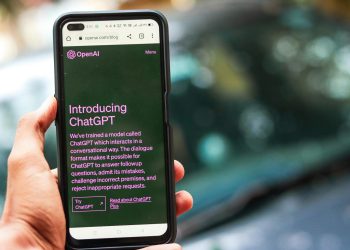Understanding NLP Fundamentals
Introduction to NLP
Natural Language Processing (NLP) is all about giving computers the smarts to get what we're saying, both in voice and text. It's like teaching them our lingo using a mix of old-school language rules, shiny new stats, Machine Learning, and deep thinking techniques (Levity). Basically, NLP lets our devices talk back in ways that actually make sense.
NLP's big goal? Make machines understand us like we're chatting with a buddy. This means getting the hang of tasks like chopping text into bite-sized words, checking grammar, and truly grasping meanings. The dream is to have systems that handle stuff like crafting realistic text, translating languages smoothly, or even giving answers like a pro.
If you're curious about how NLP gets technical, hop on over to our bits about large language models and pre-trained language models.
NLP Applications in Real Life
NLP doesn’t just stay in the techie realm. It walks its talk in our everyday lives and changes how industries function. Here’s where NLP flexes its muscles:
-
Search Engines: These nifty tools use NLP to guess what folks might search next based on what's buzzing, cracking the code behind the words to dish out spot-on search results (Levity).
-
Translation Services: Today’s translation apps, powered by NLP and Machine Learning, can tackle multiple languages with flair. They've come a long way since those clunky early translation gizmos from the 1950s (Levity).
-
Sentiment Analysis: Ever wondered how businesses know how you feel about their stuff? Sentiment analysis, which can tag feedback as sunny, stormy, or meh, offers insights into customer vibes (Levity).
-
Customer Support: Chatbots, courtesy of NLP, handle all those rinse-and-repeat customer questions, letting humans tackle the trickier stuff. This means quicker responses and consistent care (IBM).
-
Data Entry and Document Handling: NLP techs handle data logging and document duties, slashing errors and saving time—perfect for fields like healthcare and finance where details make a big difference (IBM).
Check out how NLP redefines industry standards in our features on applications of large language models and generative AI models.
Here's a quick-look table on some key NLP players:
| Application | Industry | Benefits |
|---|---|---|
| Search Engines | Technology | Smarter, tailored searches |
| Translation Services | Global Communication | Fluid, accurate translations |
| Sentiment Analysis | Marketing | Customer vibe check |
| Customer Support | E-commerce, IT | Streamlined routine tasks |
| Data Entry | Healthcare, Finance | Spot-on data, quicker processing |
With these NLP basics under our belt, we see just how much this technology changes our gadget interactions and eyes its future breakthroughs.
Why Big Language Models Matter
We're diving into how these big language models are making waves in the world of talking tech. These slick models have changed the game in how we chat with machines, making it easier and more natural to get along with our digital buddies.
Language Models in Action
Big ol' language models soak up huge piles of text, so they get good at understanding and playing with our everyday words. They’re not just about stringing sentences together—they predict what makes sense next. Here’s where they're shaking things up:
| Application | What It Does |
|---|---|
| Chatbots | Tackles customer questions so the humans don't have to; faster replies, too. |
| Data Crunching | Digs through messy data for gold nuggets about what folks like and trends. |
| Search Engines | Gets what you're really asking and finds the right stuff. |
| Writing Stuff | Makes text for articles, reports, ads—you name it, sounds like the real deal. |
These models take over boring chores, clean up data faster, and spit out top-notch content like nobody's business.
How NLP Changes the Conversation
NLP’s really shaking up how we chat, both when we're talking shop and just shooting the breeze. By weaving NLP into tech, we've made chit-chat quicker and sharper. Here's what's been happening:
1. Smarter Data Digs:
NLP does the heavy lifting in spotting feelings and opinions, helping with smart choices and tailor-made plans. Curious about its data-crunching muscle? Check out deep learning language models.
2. Better Searches:
When engines get what you mean, they hand over the good stuff without a fuss, making online digs a breeze. For more about this, take a peek at language models for information retrieval.
3. Work on Auto-Pilot:
NLP keeps things running smoothly with fewer hiccups, like in customer chat or sorting papers. Wanna see more automation perks? Swing by applications of large language models.
| Chatting Side | What Changes |
|---|---|
| Smoother Rides | Takes over the dull stuff and keeps mistakes down. |
| Spot On | Finds the right info and spots trends, quick. |
| Fresh Ideas | Creates awesome content across the board. |
| Talk to Anyone | Chat in any tongue—no borders here. |
For more on how NLP reshapes how we talk, check out what's happening with generative AI models and how they pop up in different industries.
As we keep on with NLP, we realize how big language models are rewriting the rulebook on how we gab and work with tech. They boost efficiency, accuracy, and creatives ideas. Understanding what they can do lets us use them to their fullest in both business and tech settings.
Advancements in NLP Technology
Natural Language Processing (NLP) is getting a serious makeover thanks to some mind-blowing language models. In the spotlight are GPT-3 and BERT, each making waves in their own right.
Development of GPT-3
Say hey to GPT-3 (Generative Pre-trained Transformer 3), OpenAI's brainchild from San Francisco, born in 2020. This bad boy is a powerhouse among language models. Fueled by mountains of data, GPT-3’s been learning from billions of words. It can spit out text that can pass off as written by humans—pretty neat trick, right?
What makes GPT-3 the popular kid on the block? It’s huge, and it crafts text that's relevant and hits the mark. You’ll spot it doing cool stuff in industries such as customer support, task automation, and even cooking up creative content. Wanna dive deeper? Check out our guide on GPT-3.
| Feature | Description |
|---|---|
| Developer | OpenAI |
| Year | 2020 |
| Training Data | Billions of words |
| Key Application | Text generation, automation |
Curious about what generative AI like GPT-3 can bring to the table? Peek into applications of large language models for more scoop.
Significance of BERT
Now meet BERT (Bidirectional Encoder Representations from Transformers), Google’s gem from 2018. Unlike the old-school models that skim text in one go, BERT understands words by considering what’s around them, giving it street-smart vibes. This makes BERT the king in understanding subtle meanings, pushing the boundaries of NLP tasks.
BERT hit the books hard, learning from a whopping 3.3 billion words, including gems from Wikipedia and the Google BooksCorpus. It’s aced many NLP tasks, but notably, it scored higher than humans on the GLUE benchmark—props to BERT for that one (Medium - UBIAI NLP).
BERT’s debut led to the creation of several spin-offs, each tweaking BERT’s strengths, like RoBERTa, ALBERT, DistilBERT, and ELECTRA, to suit different needs in speed, power, or size (LinkedIn).
| Feature | Description |
|---|---|
| Developer | Google AI |
| Year | 2018 |
| Training Data | 3.3 billion words |
| Key Achievements | State-of-the-art results on NLP tasks |
Wanna know more about the BERT model and its game-changing qualities in NLP? Our guide’s got the goods.
Our peek into GPT-3 and BERT shows off their unique strengths and gives a glimpse into how NLP tech is changing the game for understanding and processing human language. These advancements set the stage for fresh inventions across the board, from customer service to dream-worthy content creation. For a look into what's coming next, visit future of language modeling.
Practical Applications of Language Models
Natural language processing (NLP) models have shaken up many sectors, allowing for advanced text analysis and creation. Here's a peek at two handy uses: sentiment analysis and chatting across languages.
Sentiment Analysis with NLP
Sentiment analysis is a nifty tool in NLP, helping businesses gauge how customers feel. It scans through stuff like reviews or tweets to figure out if the mood's happy, gloomy, or just chill. This way, companies get a pulse on what folks think about their brand and products in a neat and organized fashion. As per Levity, sentiment analysis gives businesses a better grip on what customers want, so they can make smarter decisions.
Some cool tricks used in sentiment analysis are:
- Word segmentation: Cutting text into words
- Named Entity Recognition (NER): Spotting proper names in text
- Natural Language Generation (NLG): Crafting text content
| Application | Technique | Description |
|---|---|---|
| Sentiment Analysis | Word Segmentation | Breaking down text into words |
| Sentiment Analysis | NER | Finding names in text |
| Sentiment Analysis | NLG | Making up text |
Check out more on sentiment analysis by heading to our large language models applications section.
NLP in Multilingual Communication
NLP plays a big role in knocking down language barriers by enabling smooth multilingual chatting. With tricks like syntax and semantics analysis, models can grasp and translate text pretty well. These include:
- Parsing: Looking at sentence structure
- Morphological Segmentation: Studying word forms
- Stemming: Trimming words to their root
Multilingual NLP lets you:
- Translate services like automatic email fixes or help desk replies
- Cross-language info hunting, so folks can search and grab papers in different tongues
| Technique | Function |
|---|---|
| Parsing | Looks at sentence structure |
| Morphological Segmentation | Studies word forms |
| Stemming | Trims words to the root |
For more on how NLP helps with multilingual chats, check out our write-up on language models for info retrieval.
Both BERT and GPT-4 models are big players in these scenes. BERT shines in tasks needing a deep dive, like sentiment finding and understanding language 'cause it looks both ways (left and right) when guessing. Meanwhile, GPT-4 is your go-to for making up stuff like text, thanks to its solid language tricks.
By tapping into these top-tier NLP techniques, companies can spruce up their operations, leading to happier customers and better connections. To dive into talks on models like BERT and GPT-4, take a peek at our pages on BERT model and GPT-4.
Overcoming Challenges in NLP
Hey folks, buckle up as we dive into the weird and wonderful world of Natural Language Processing (NLP). Dealing with these fancy word-spinning machines ain't always a walk in the park. The biggest roadblocks? Keeping the data pristine and fighting against the boogeyman of bias. Both mess with how well these NLP systems serve us, fair and square.
Data Quality in NLP
Training data is the secret sauce of any sneaky good NLP model. These language systems need a five-star diet. If they chow down on faulty or wonky info, they'll start parroting back nonsense, which is a big no-no. (Remember, garbage in, garbage out!)
So how do we keep the data buffet clean and green? Here's the rundown:
- Clean Up Crew: Get rid of errors, duplicates, and the plain ol' junk.
- Thumbs-Up Check: Make sure the data's golden and totally spot-on.
- Add Some Spice: Toss in a mix of data to keep things spicy.
Here's our "keep it neat" checklist:
| Validation Aspect | Description |
|---|---|
| Spot-On | Keep data error-free |
| All There | Make sure we've got all the bits we need |
| Makes Sense | Follow the same format throughout |
| It's Fresh | Up-to-date and ready to roll |
Solid, high-grade data means our NLP buddies like GPT-3 and BERT get their act together, showing off their smarts in the real world.
Addressing Bias in NLP Models
Now, let's talk bias. It's like having an unwanted guest at the NLP table—spreading yuck vibes and unfairness. And it's our job to give it the boot. Bias in data can make models spew out harmful stereotypes or act outside their lane. So how do we keep our NLP systems in check? Mix up that training data and keep a hawk-eye on the outcomes.
Here's the bias beat-down plan:
- Data Variety Show: Cover all your demographic bases.
- Bias Snooping: Use tools to sniff out any foul play.
- Keep Tabs: Regular check-ups to squash any sneaky biases pronto.
When it comes to shutting down bias, consider this:
| Consideration | Approach |
|---|---|
| Mixed Bag of Data | Variety is the spice of (data) life |
| Fair Game | Use bias-busting algorithms |
| Humans on Deck | Human eyes double-check the machine's work |
Staying on top of bias ensures models, like those in the generative AI family, act like model citizens, treating all users with the fairness we’d expect.
Wanna know more about tackling biases or upholding fairness in language models? Dive into our insightful reads on bias in language models and fairness in language models. Nailing top-notch data and battling bias are must-dos for building kick-ass, ethical NLP systems.
Future Trends in NLP
Checking out where natural language processing (NLP) is headed can be eye-opening, with some of the coolest advancements and breakthroughs ready to shake things up. Figuring out these trends throws light on how businesses and tech aficionados can cash in on these strides for a serious leg up.
Emerging NLP Models
As NLP takes on new tricks, some emerging models are really showing off:
-
BERT and Friends: Google brought out BERT in 2018, and, boy, did it shake up NLP! Coming with a fancy name – Bidirectional Encoder Representations from Transformers – BERT got a performance boost from pals like RoBERTa, ALBERT, DistilBERT, and ELECTRA. They’ve made BERT better, faster, and stronger. RoBERTa, for example, proved its mettle, spanking original BERT scores on tests, clocking an 88.5 on the GLUE leaderboard.
-
GPT and Its Gang: OpenAI gave us the GPT models – a string of champs that have pushed NLP to new pinnacles. Followed by elders GPT-2 and GPT-3, recent kin like GPT-Neo upped the ante with flair, skill, and muscle. These marvels crush tasks like text gibberish, summarizing and cross-talk in other lingo.
-
PaLM (Pathways Language Modeling): Get a load of PaLM, a no-nonsense Transformer model bragging 540 billion parameters. Armed with the Pathways system, it takes language and tech tasks head-on, straightening out even trickiest issues.
Here’s a quick-and-dirty look at some of these standout NLP bots:
| Model | Whiz-Bang Features |
|---|---|
| BERT | Multi-layered smarts, easy tweaks, spot-on results |
| RoBERTa | BERT on steroids with protracted drill and heft |
| ALBERT | Knows its stuff with trimmed flab, self-checking |
| GPT-3 | A mighty 175 billion parameters, multi-talented |
| PaLM | 540 billion parameters, few-shot whiz |
NLP Innovations in Industry
NLP in the hustle and bustle of industries keeps blossoming as companies dream up new ways to fold them into their routines:
-
Jazzing Up Customer Experience: With NLP's help, companies get a sharper ear to hear what customers truly feel, offering a personal touch. These smart sentiment tools dish out playful engagement, adapting services to the mood.
-
Talking in Tongues: Overcoming language is like flipping a switch with NLP! Multilingual machines and GPT-3’s babble-breaking let businesses easily talk to folks worldwide.
-
Making Savvy Decisions: Corporations with mountains of unstructured chatter use NLP to wring out smart decisions, converting everyday jabber from reviews or social talk into neat takeaways.
-
Teasing Out Text Tasks: In niches like legal and health, NLP champs pull critical info from heaps of documents, easing professional burdens and lowering boo-boos.
-
Auto-Pilot Content Creation: Content pros hitch a ride on GPT-3 and buddies for a nonstop stream of quality material. They keep social feeds buzzing and campaigns rolling effortlessly.
As we line up these hot NLP prospects, keeping an eye on the tech leaps and surprises boosting the sector is the ace move. Jumping on these trends sure is going to open doors for businesses to grow and get ahead.










